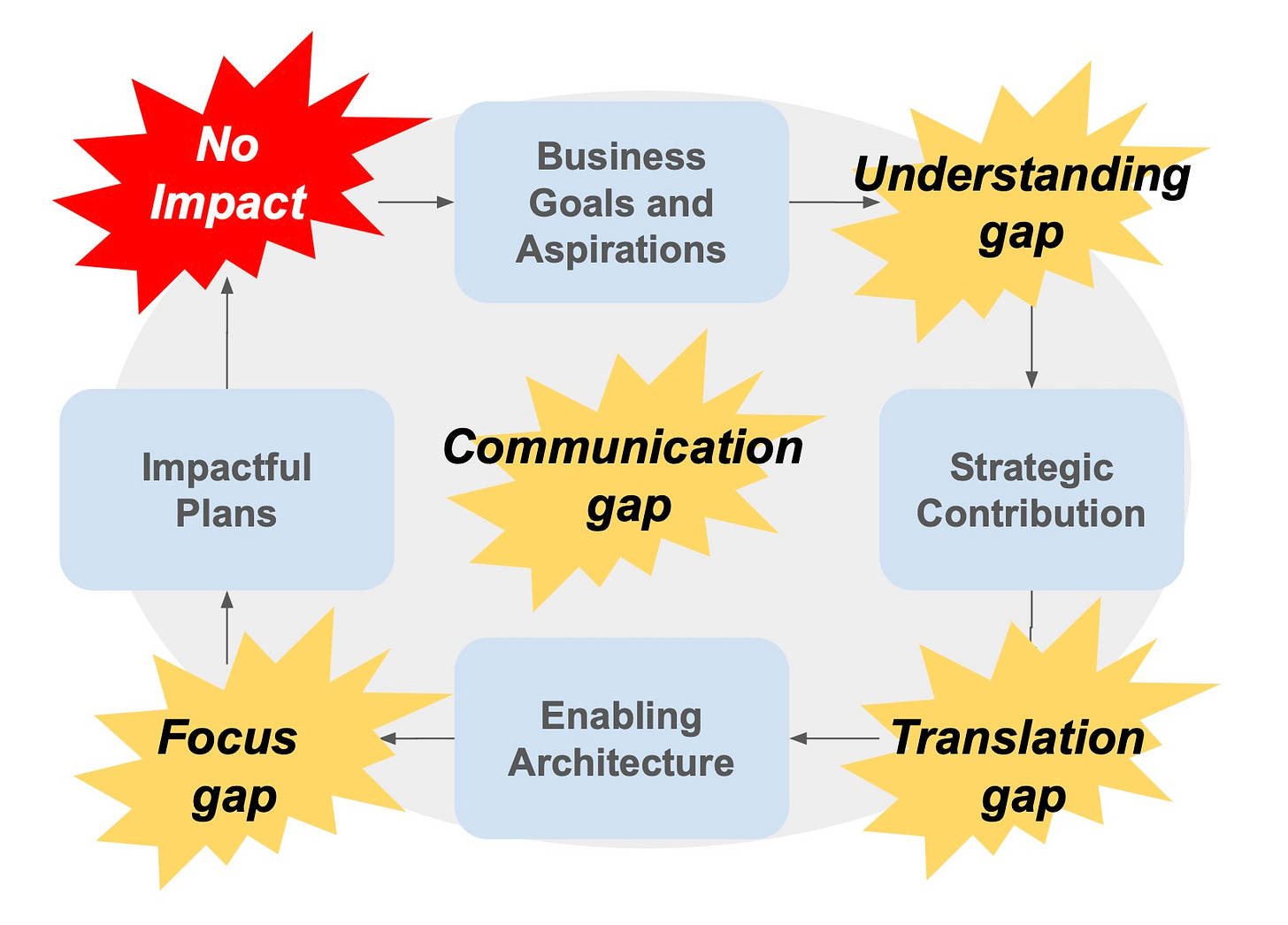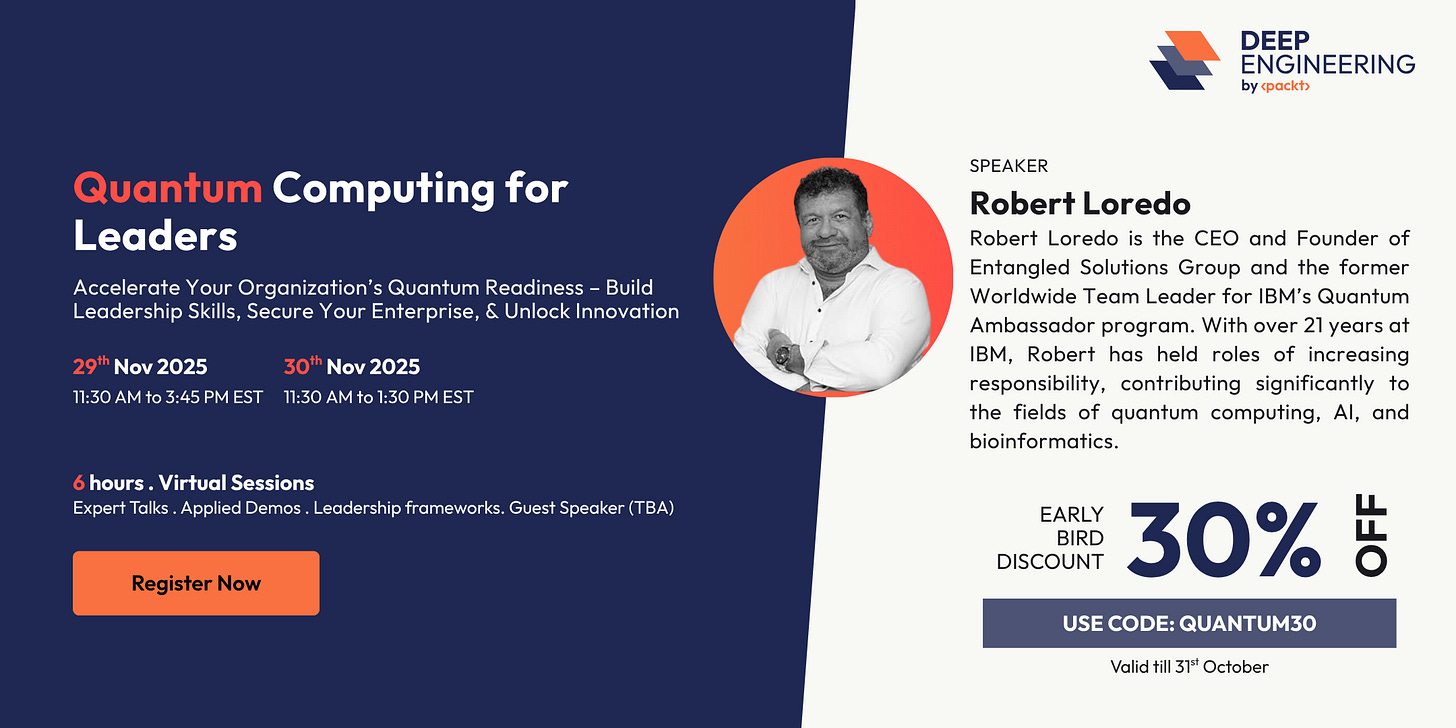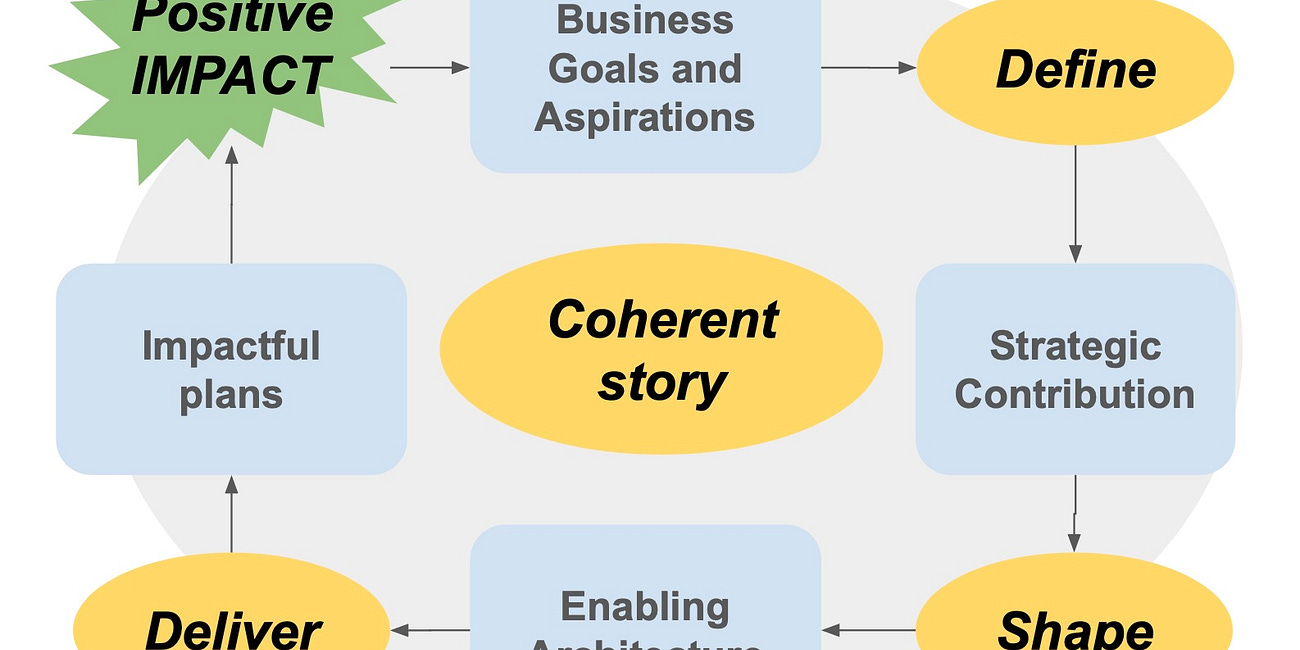Deep Engineering #24: Scott Millett on why IT strategy is business strategy
Forrester flags CIO rescue missions; BCG shows only 5% capture AI value—see how Define → Shape → Deliver links intent, architecture, and outcomes.
Build your next app on HubSpot with the flexibility of an all-new Developer Platform
The HubSpot Developer Platform gives you the tools to build, extend, and scale with confidence. Create AI-ready apps, integrations, and workflows faster with a unified platform designed to grow alongside your business.
✍️From the editor’s desk,
According to Forrester’s 2026 Technology & Security Predictions, one-quarter of CIOs will be asked to bail out business-led AI failures in 2026 and two-thirds will need to justify spend explicitly in business-value terms. BCG’s The Widening AI Value Gap report, on the other hand, finds that only 5% of companies—the “future-built”—are reliably capturing AI value, with agents already delivering ~17% of 2025 AI impact.
So what gaps are the remaining 95% failing to fill? And how can senior technologists bridge these gaps to align IT strategy with business outcomes?
To answer these questions, today we are kicking off the much anticipated IT Strategy Playbook series in collaboration with Scott Millett. He starts the series with a strong claim: “IT strategy is business strategy.” Millett is an IT leader, strategist, and author with 25+ years as CIO, CTO, and architect across large-scale transformations. Articles in the series are adapted from his forthcoming book, The IT Strategy Playbook (Packt, May 2026) and Part 1 introduces his Define → Shape → Deliver loop for closing the gaps between strategy, architecture, and execution. Deep Engineering readers are going to get an exclusive preview of the book’s content in development over the next few months and we invite you to leave constructive feedback as you follow along in the comments.
In today’s issue:
Editorial Feature: From Outputs to Outcomes: Closing the IT Strategy–Business Gap with Scott Millett
The IT Strategy Playbook (Part 1): Define, Shape, Deliver by Scott Millett
Tech Briefs including Forrester’s 2026 predictions, BCG’s report, the 32nd edition of the IBM CEO study, and more
Tool of the Week: Hugging Face Text Generation Inference (TGI)
Let’s get started.
Quantum Readiness, Now: Executive Masterclass (Nov 29–30)
Quantum Computing for Leaders—2-day executive masterclass, Nov 29–30 (US ET). Build quantum-ready roadmaps, pilot hybrid workflows, and plan quantum-safe security. Live online with Robert Loredo. Early bird 30% off with code QUANTUM30 (ends today).
From Outputs to Outcomes: Closing the IT Strategy–Business Gap with Scott Millett
If you’re a senior technology leader, you’ve likely heard the refrain: “be more strategic” and “align IT with the business.” Yet moving from technological activity to business outcomes is easier said than done. In part 1 of the series adapted from Scott Millett’s upcoming book, The IT Strategy Playbook, a simple boardroom question – “What problem are we trying to solve?” – exposes how even a polished IT plan can fall flat when it’s all outputs and no outcomes.
Four Gaps Between Tech Effort and Business Impact
In his first article in the series, Millett identifies four recurring “gaps” that hinder IT leaders from delivering strategic value. These are not technical failures, but disconnects in understanding and execution:
The Understanding Gap: When IT initiatives aren’t clearly tied to business goals. This gap is apparent if IT cannot articulate why a tech project matters for competitive advantage. It’s no surprise that when the IBM Institute for Business Value and Oxford Economics surveyed 2,000 CEOs from 33 countries and 24 industries for the IBM CEO study they found that only 25% of AI initiatives have delivered their expected ROI.
The Translation Gap: The disconnect between high-level strategy and the enabling architecture. It’s one thing to declare a cloud or AI strategy, and another to design coherent systems and data architectures for it. Rushed investments often lead to fragmented systems. In the same study, it was found that half of CEOs admit tech adoptions have left them with disconnected, “piecemeal” technology.
The Focus Gap: Failing to prioritize for impact. When everything is a priority, nothing delivers value. Too often the IT project portfolio becomes a sprawl of low-value initiatives lacking clear prioritization. This gap leads to IT organizations that are busy but not effective in moving the business needle. In an HBR article, Antonio Nieto-Rodriguez, CEO of Projects & Company, writes: “Many organizations are aware that they are suffering from project overload, slowing execution and obscuring strategic priorities. Yet even with this knowledge they struggle to kill projects to release resources and energy to focus on their most important priorities.”
The Communication Gap: Inability to communicate strategy in clear, business terms. This amplifies all the other gaps – if executives don’t understand the why and what of IT’s plans, buy-in evaporates. According to Forrester’s 2026 Technology & Security Predictions, CIOs must “speak fluent ‘business value’” to win executive buy-in. IT plans must be explained in terms of tangible business outcomes rather than technical outputs.

These gaps are showing up quite starkly when it comes to enterprise AI adoption. In fact here is what Forrester has predicted regarding AI spend in the coming year:
“With fewer than one-third of decision-makers able to tie the value of AI to their organization’s financial growth, CEOs will lean more on their CFOs to approve AI investments based on their ROI in 2026. As financial rigor slows production deployments and wipes out proofs of concept, enterprises will defer a quarter of their planned AI spend into 2027.”
Additionally , according to BCG’s The Widening AI Value Gap report:
“Future built companies (which make up only 5% of the sample) prioritize AI opportunities through a clear, sequenced roadmap rather than switching on all enterprise applications at once (like the remaining 95%).”
Define → Shape → Deliver: A Playbook for Strategic IT
How can IT leaders close these gaps? Millett proposes a simple but powerful mental model called the DSD Loop – Define, Shape, Deliver. Its philosophy: intent first, design second, implementation last. By defining the business objectives clearly, shaping the architecture accordingly, and then delivering focused initiatives, CTOs/CIOs can ensure every technical choice ties back to a business outcome.
This approach turns the typical “technology-first” mindset on its head. Too often, organizations chase shiny objects – implementing technology for its own sake without a defined problem to solve. The DSD playbook instead begins with the outcome in mind. Each phase informs the next: Define the why and what, Shape the how (technology, teams, architecture), and then Deliver the when through a concrete roadmap.
Interestingly, delivery comes last in this loop. Starting with coding or tool selection before nailing the “why” guarantees a disconnect. The DSD framework provides discipline to link every project (“output”) to a strategic outcome.
Keeping Technology Tied to Business Value
Boards and CEOs now demand clear returns on technology – CIOs are expected to be innovation enablers driving growth, not just IT operators. Technology leadership must translate into tangible business results.
Yet rising scrutiny comes with challenges. Forrester has predicted that in 2026:
“One-quarter of CIOs will be asked to bail out business-led AI failures in their organization.”
When business units bypass IT, CIOs often end up fixing the mess. Avoiding that scenario means jointly defining initiatives from the start and enforcing good governance. As Frederic Giron, VP and senior research director at Forrester said:
In 2026 “Success will be defined not by the sophistication of their (CIOs’) AI models, but by how seamlessly those models are integrated into end-to-end processes to drive both efficiency and growth. The CIOs who thrive will be those who can balance these complex priorities, acting as strategic partners who connect technology investment directly to business outcomes.”
At the moment, According to BCG’s report, only about 5% of companies are “future-built” to fully capture AI’s benefits, while the rest lag behind. Those top performers succeed by tightly aligning tech initiatives to business strategy and continuously refining that alignment.
Bridging the gap from IT output to business outcome isn’t a trivial endeavor – but it’s a core part of the CTO/CIO role. By addressing the understanding, translation, focus, and communication gaps, technology leaders can reorient their teams from doing things right to doing the right things. The DSD loop offers a pragmatic way to ensure that the main thing (business value) indeed stays the main thing. In the end, an IT strategy only matters if it delivers tangible business results.
From here, it’s about turning alignment into action. Scott Millett’s first article kicks off the IT Strategy Playbook series with the Define → Shape → Deliver loop and the concrete artifacts and checkpoints to carry strategy into delivery.
🧠Expert Insight
The IT Strategy Playbook (Part 1): Define, Shape, Deliver
This article is Part 1 of Deep Engineering’s exclusive ongoing series adapted from The IT Strategy Playbook: How CIOs and CTOs can drive business growth through focused action, architecture, and execution by Scott Millett (Packt; publishing May 2026). Millett is an IT leader, strategist, and author with 25+ years’ experience, having served as a CIO, CTO, and archite…
🛠️Tool of the Week
Hugging Face Text Generation Inference (TGI)
TGI is an open-source, production-grade LLM serving stack (Rust + Python + gRPC) that powers Hugging Face’s own Inference API, Inference Endpoints, and HuggingChat. If you want a battle-tested way to serve open-source LLMs with streaming, batching, tracing, and metrics—without building your own server—it’s a strong default.
Key capabilities:
Throughput & latency features: continuous batching, tensor parallelism, SSE streaming, FlashAttention, and PagedAttention.
Ops hooks: OpenTelemetry tracing and Prometheus metrics out of the box.
Structured outputs & tool use: “Guidance”/JSON-style constrained generation for function calling.
Multi-backend support: NVIDIA, AMD ROCm, Intel Gaudi, AWS Trainium/Inferentia, and even TensorRT-LLM.
📎Tech Briefs
Forrester’s 2026 Technology & Security Predictions: Forrester flags five pressure points for tech leaders: a quarter of CIOs will be asked to bail out business-led AI failures; enterprises will push 25% of planned AI spending into 2027; “neoclouds” will seize $20B in genAI revenue, chipping away at hyperscaler dominance; the time to fill developer roles will double amid shifting talent dynamics; and quantum security will command >5% of the overall IT security budget—together signaling bigger budgets, tighter scrutiny, and a premium on translating strategy into measurable business outcomes.
IBM Institute for Business Value’s “2025 CEO Study: 5 mindshifts to supercharge business growth”: Based on a Q1-2025 survey of 2,000 CEOs across 33 geographies and 24 industries, IBM outlines five leadership “mindshifts” — Make courage your core; Embrace AI-fueled creative destruction; Cultivate a vibrant data environment; Ignore the FOMO, lean into ROI; Borrow the talent you can’t buy — as a roadmap to move from productivity to performance with agentic AI. The study reports that 61% of CEOs say their organizations are actively adopting AI agents and preparing to implement them at scale, and leading CEOs expect AI to have significant to transformational impact on objectives from decision-making and customer experience to productivity and growth.
BCG’s “The Widening AI Value Gap: Build for the Future 2025” report: BCG’s October-2025 study (n=1,250) finds only 5% of companies—“future-built” firms—are achieving AI value at scale, while 60% report minimal value despite substantial spend; these leaders are widening the gap, delivering 1.7× revenue growth and 1.6× higher EBIT margins than laggards and expecting faster gains as agentic AI rises from 17% of total AI value in 2025 to 29% by 2028; BCG attributes lagging performance to diffuse efforts and weak top-management commitment, urging end-to-end workflow reinvention over scattered pilots and disconnected initiatives.
CIO.com | “Why CIOs need to master the art of adaptation” by Andrada Fiscutean: With gen-AI reshaping work, the article recommends CIOs should couple adaptability with structured decision criteria (security, ROI, scalability, compliance), favor modular systems, and pilot-then-scale approaches over “fail fast” fads, and build cultures that support experimentation and learning; the piece also cites Foundry’s 2025 State of the CIO showing the role’s shift toward innovation and transformation.
🎥IBM Think 2025 Keynote “Usher in the future of work with AI agents built for the enterprise”: Ritika Gunnar, General Manager, Data & AI, Software, IBM, frames AI agents as the next enterprise step—autonomous, proactive, and adaptive “systems of intelligence”—and cites early adoption (agents in >85% of environments this year; >50% expanding into essential production next year) alongside real gains (HR handling 94% of requests, sales reclaiming a quarter of the week, procurement cycle times down ~70%) and real challenges (silos, weak integration, agent sprawl, enterprise “-ilities”).
That’s all for today. Thank you for reading this issue of Deep Engineering. We’re just getting started, and your feedback will help shape what comes next. Do take a moment to fill out this short survey we run monthly—as a thank-you, we’ll add one Packt credit to your account, redeemable for any book of your choice.
We’ll be back next week with more expert-led content.
Stay awesome,
Divya Anne Selvaraj
Editor-in-Chief, Deep Engineering
If your company is interested in reaching an audience of developers, software engineers, and tech decision makers, you may want to advertise with us.






